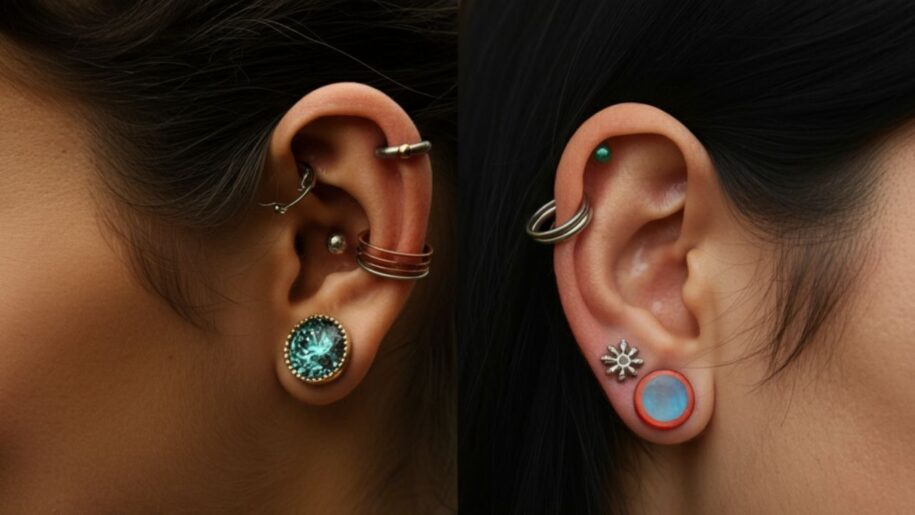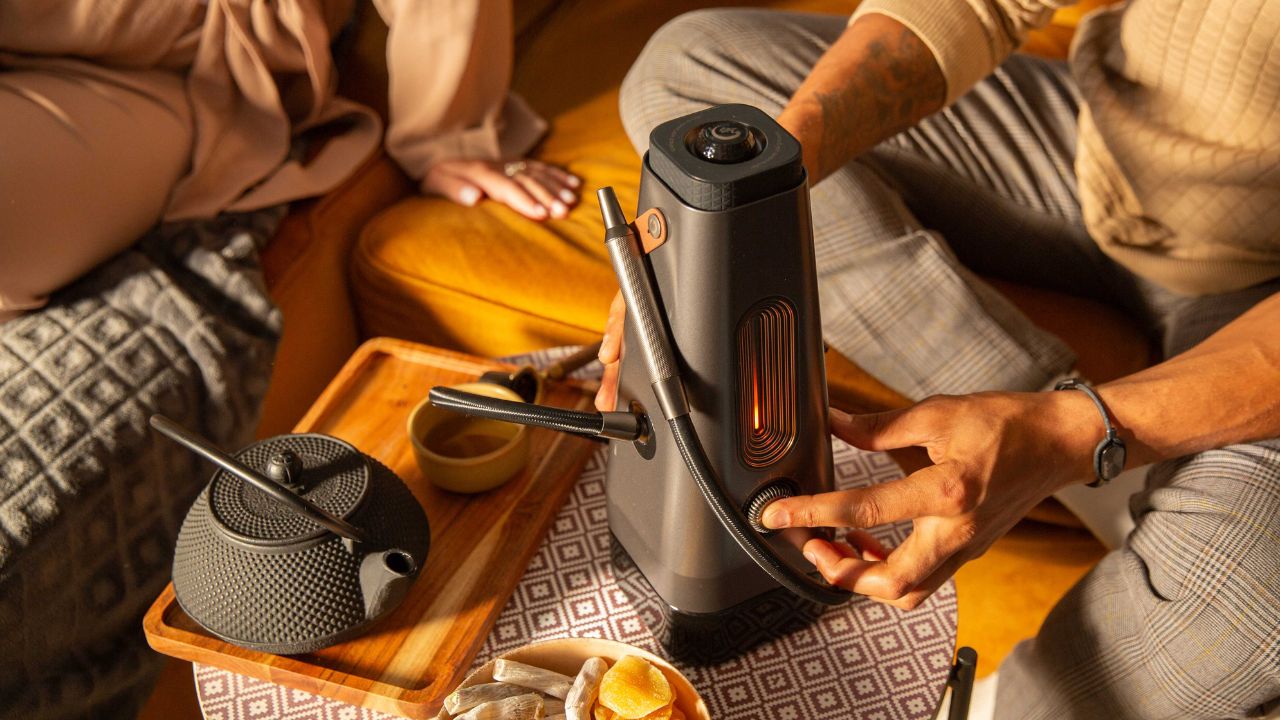The Ultimate Guide to Helix Piercings
Helix piercings are one of the most sought-after choices for body modification enthusiasts. Whether it’s your first piercing or one of many, the helix piercing is a versatile option that can be as subtle or bold as you want. If you’re considering getting one, this guide will walk you through everything you need to know—from the basics and pain levels to aftercare, jewellery options, and common FAQs.
What Is a Helix Piercing and Why Is It Popular?
The helix piercing is a cartilage piercing located along the upper outer rim of your ear. Unlike fleshy lobes, the helix area comprises cartilage, giving it a unique aesthetic appeal. Its versatility makes it even more attractive; you can start with a single piercing or create an entire curated ear featuring multiple helix piercings!
Helix piercings became popular for blending elegant jewellery styles with the edgy vibe of cartilage piercings. Celebrities like Zendaya and Kylie Jenner have been spotted rocking helix piercings, reinforcing their trendiness in body mods and fashion. People also love them because they can convey individuality without being overly flashy.
How Painful Is a Helix Piercing?
It’s no secret—one of the most common questions about piercing is, “How much does it hurt?” For those worried about the pain of a helix piercing, the good news is that it’s generally considered moderately painful. Since the helix is cartilage rather than soft tissue, the piercing process might feel like a sharp pinch followed by some pressure, but the pain is brief.
Let’s compare it to other popular piercings:
- Earlobe Piercing: Helix piercings tend to cause more discomfort than a typical earlobe piercing because of the cartilage.
- Nostril Piercing: Some people equate the pain level of a helix piercing to that of a nostril piercing—sharp but short-lived.
- Industrial Piercing: An industrial piercing involves two punctures linked by a barbell, which is often more painful than a single helix.
Pain tolerance varies from person to person, but the helix piercing is widely regarded as manageable, even for first-timers.
Aftercare Tips for Optimal Healing
Healing is a critical part of enjoying your new helix piercing. Being a cartilage piercing, it requires more care than earlobe piercings, but following a proper aftercare routine will make the healing process much smoother:
1. Clean Twice a Day
Clean the area twice a day with a saline solution. Avoid alcohol or hydrogen peroxide, which can irritate the skin and delay healing.
- You can purchase pre-made saline solutions or make your own by mixing 1/4 teaspoon of non-iodized salt with a cup of warm distilled water.
2. Avoid Touching or Twisting
It’s tempting to touch your new piercing, but this can introduce bacteria and cause infections. Refrain from twisting or playing with the jewellery during healing, which can damage the tissue.
3. Keep Your Hair and Products Away
Ensure your hair doesn’t snag on your jewellery, and be cautious with styling products like hairspray or gels that can irritate the piercing site.
4. Be Patient
On average, helix piercings take 6-12 months to heal fully. Don’t rush to change your jewellery before your piercer gives you the go-ahead.
Warning Signs
Watch out for persistent redness, swelling, or discharge. These symptoms might indicate an infection and should be checked by a professional.
Jewellery Options for Your Helix Piercing
Once your piercing has healed (or even in the early days if you choose high-quality starter pieces), the fun starts—picking out jewelry! Helix piercings accommodate a variety of styles and are perfect for expressing your personality.
Here are some popular options:
- Studs: A classic and straightforward starter choice. Opt for titanium or surgical-grade steel to prevent irritation.
- Hoops: A sleek, minimalist option for a bold yet elegant look.
- Cuffs: Great for stacking multiple helix piercings.
- Decorative Pieces: Think gemstones, charms, or tiny chains for added flair.
- Materials:
-
- Titanium (hypoallergenic and durable)
- Gold (ideal for healed piercings. Avoid plated)
- Surgical-grade steel (affordable and safe)
Pro tip: Layer multiple styles and sizes for a curated ear that stands out best.
Potential Risks and How to Avoid Them
Like any body modification, helix piercings come with potential risks. Being aware of these risks and taking steps to avoid them ensures a smoother experience.
Common Issues and Precautions:
- Swelling and Redness:
-
- Minor inflammation is normal; reduce swelling with a cold compress.
- Keloids:
-
- These raised scars may form if the healing site is irritated. Choose high-quality jewelry and avoid trauma to the piercing.
- Infections:
-
- Clean your piercing daily and avoid swimming in unclean water during healing.
- Rejection/Migration:
-
- Though rare, some cartilage piercings can migrate. To prevent this, ensure your jewellery is the correct gauge and material.
If you experience persistent pain, extreme swelling, or anything unusual, don’t hesitate to contact your piercer or a healthcare professional.
Frequently Asked Questions (FAQs)
How long does it take for a helix piercing to heal?
A helix piercing takes about 6-12 months to heal completely. While the initial healing phase may last within a few months, cartilage piercings take longer to recover fully.
Can I sleep on my helix piercing?
During the healing period, avoid sleeping on the side of your fresh helix piercing to prevent irritation or pressure. A travel pillow can help keep you comfortable.
How much does a helix piercing cost?
The cost varies depending on location and studio but typically ranges from $30 to $70, excluding jewelry.
Can I get multiple helix piercings at once?
Absolutely! Many people opt for doubles or triples for an edgier look. Discuss your plans with your piercer to ensure proper placement and healing.
What’s the best age to get a helix piercing?
Most reputable piercing studios require you to be at least 16 years old with parental consent (or 18 without) for a helix piercing.
Your Perfect Helix Piercing Awaits
Helix piercings are more than just a trend—they’re a timeless way to showcase your style and personality. While they require patience and care, the result is worth it. Experiment with jewellery styles, maintain good aftercare habits and enjoy being part of a community that celebrates body modification as an art form.
If you’re ready to get started, find a professional, experienced piercer near you and make the leap—you might discover your new favourite accessory!


















